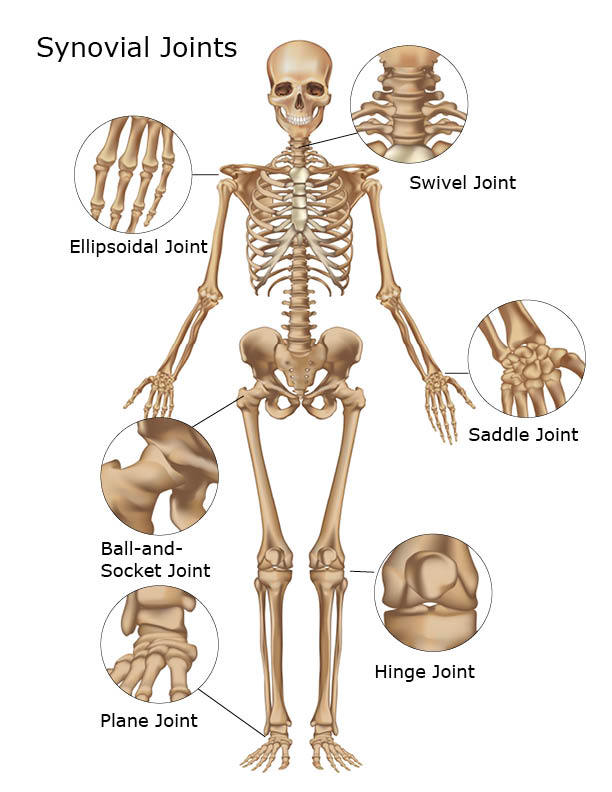193.HOW DO OUR JOINTS WORK?
If our bodies didn’t have joints, it would be impossible for us to live as we do. We would have to lie absolutely still always, unable to move our heads, walk, raise our arms, or move a single finger! Our ability to move is possible because of the existence of joints.
Wherever two bones glide over one another, a joint exists. A joint allows the bones to glide smoothly with very little friction. This is because the ends of the bones are covered by cartilage so that they don’t really rub against each other.
In addition, a whitish fluid which has the consistency of raw egg white is secreted by the joint. This is called the synovial fluid, and it acts like oil in a machine to reduce friction. When the joint is at rest, very little synovial fluid is produced and the joint actually becomes creaky.
In the human body, there are four important types of joints. One of these is a ball-and-socket joint such as is found at the shoulder. This shoulder joint has the greatest range of motion of any joint in the body. That’s why you can move your arm in any direction in space. The hip joint is the largest ball-and-socket joint in the body, but because it is fitted more tightly, it doesn’t permit as much range of motion.
The second kind of joint is an ellipsoid joint. In such a joint, an egg-shaped surface fits into an elliptical cavity. The wrist joint is an example of this kind. It enables us to make elliptical rather than circular movements. A variation of this kind of joint is the saddle joint, in which the bones can move in only two directions, like a rider in a saddle. We have this kind of joint in our backbone, which can be bent in only two directions, backward and forward, and from side to side.
A third type of joint is the hinge joint. Here the bones can be moved only to and fro in one plane, like doors or pocketknives. The joints between the bones of our fingers are hinge joints.
The last kind of joint is the rotary joint. This enables the bones to turn like a corkscrew. We have a rotary joint at the base of our skulls so we can turn our heads, and we have others in our elbows which enable us, for example, to turn a key in a lock.



Leave a Reply